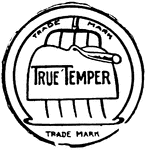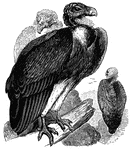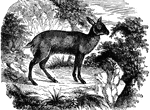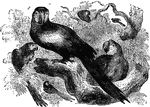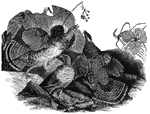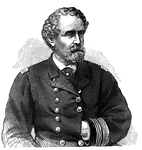
Rear Admiral James Alden
"Rear Admiral Alden, born in Portland, Me., March 31st, 1810, died in San Francisco, Cal., February…

Fort Walker
"View from the interior of Fort Walker, Hilton Head, S. C. looking inland, showing the defenses from…
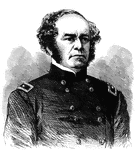
General Henry W. Benham
"General Benham, born in Connecticut in 1817, died in New York June 1st, 1884, was graduated from the…
War in Virginia
"The war in Virginia. Battery on the left of the enemy's line, in front of Petersburg, captured by the…
!["The war in Virginia- contrabands coming into the Federal camp. The [African American] furnishes, in his various phases of existence, wonderful studies for the artist and philosopher. Never, perhaps, has a race seen such a moment as during the Civil War, when the chains of bondage were breaking from the limbs of 4,000,000 of men. The distant roar of battle was to them a sound of deliverance. With all the uncouth, odd and queer manifestations of joy they prepared to reach the camp of the delivering Yanks. Yoking together most incongruous teams before the farm wagons of their fled masters, with ass and ox and horse, with household gear queerly assorted, with useless truck and little that could rarely serve them, they started for the Promised Land, and might often have been seen coming in as our artist, a most close student of nature, depicted them, with his usual felicity of portraiture."— Frank Leslie, 1896](https://etc.usf.edu/clipart/11700/11752/contrabands_11752_mth.gif)
Contrabands
"The war in Virginia- contrabands coming into the Federal camp. The [African American] furnishes, in…

Hooker's Battle
"The war in Tennessee. Hooker's Battle above the clouds, and capture of the Confederate position on…

War in Virginia
"The war in Virginia. General Butler's lines south of the James, Va., with troops in position near the…

Bummers
"Sherman's 'Bummers' foraging in South Carolina. Our artist sent us with this sketch of 'Bummers Foraging'…

Seventeenth Corps
"Sherman's Seventeenth Corps crossing the south Edisto River, S. C., on Pontoons, at Bennaker's Bridge,…

Battle of Poplar Spring
"Grant's movements south of the James- Battle of Poplar Spring Church- gallant charge of a part of the…

Battle of Poplar Spring Church
"Grant's movements south of the James- Battle of Poplar Spring Church- the Ninth Corps passing Poplar…

General Joseph E. Johnston
"General Johnston, born in Cherry Grove, near Farmville, Va., February 3rd, 1807; died at Washington,…

Fork-Tailed Kite
"The fork-tailed kite, (N. furcatus) is twenty-five inches long; the wings and tail black;…

Red-Shouldered Hawk
Also known as the winter falcon, is found in California, Wisconsin, and South Carolina.
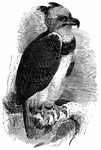
Harpy Eagle
Genus Harpyia, it is one of the largest, most fierce, and powerful eagles. It has a crest of…
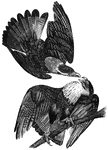
Caracara Eagle
The caracara eagle, genus Caracara found in Cental and South America, as well as portions of…

Fork-Tailed Psalurus
Native to South America, the males of this species are known for their pair of prominent tail feathers.
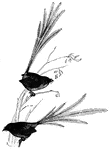
Emu Wren
Native to Australia, this is known to natives of New South Wales as waw-gul-jelly. It is shy…
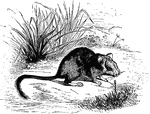
White Footed Tree Rat
Hapalotis Albipes. "Nearly the size of a rabbit, but of mouse-like form, and is chiefly found in New…
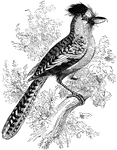
Batara
Taking its name from the Azara people of South America, the batara is the largest of the shrikes.
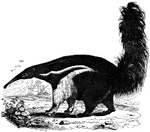
Tamanior
Inhabits most part of South America. About four feet in length. Spends the greater parts of its life…

Interior of Libby Prison
"Interior of Libby Prison, Richmond, Va., with prisoners from General Lee's army confined after the…

Billy Wilson Zouaves
"The ('Billy') Wilson Zouaves, at Tammany Hall, taking the oath of fidelity to the flag, April 24th,…

Fort Walker
"Landing of United States troops at Fort Walker, after the bombardment, November 7th, 1861. In order…
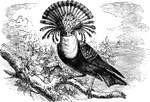
King Flycatcher
An impressive South American species of fly-catcher, with a transverse crest of reddish-fawn feathers.
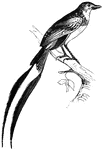
Tricolored Alectrurus
Native to South America, the tricolored alectrurus measures only six inches in length.

Red-Wing Thrush
The red-wing thrush migrates from the north to the south of Europe in the winter, feeding on worms and…

Inghalla
"Is of a deep reddish-fawn color; its lives in pairs or small families, frequenting the reedy borders…
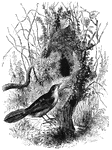
Pinc-Pinc
Found in South Africa, the pinc-pinc is about the size of a wren, and is named after its distinctive…
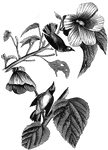
Blue-Winged Yellow Warbler
Found from Louisiana to New Jersey, the blue-winged yellow warbler migrates south to tropical parts…
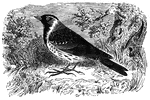
Common Snowbird
Found as far north as Greenland, the common-snow bird migrates as far south as Virginia in the winter.

Shore Lark
Found in the north of Europe and Asia, specimens of the shore-lark have been ound as far south as France…

African Elephant
"The head is rounded, the front convex instead of concave, and the nails on each hind-foot are three…
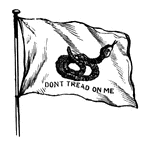
South Carolina flag
"Rattlesnake Flag of South Carolina, during independence of the states."—E. Benjamin Andrews,…
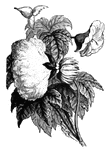
Cotton Plant
"Cotton Plant, which was regularly exported in small quantities from the South."—E. Benjamin Andrews,…

Civil War Banner in South Carolina
"Street banner in Charleston, before the Civil War began."—E. Benjamin Andrews 1895
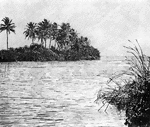
Miami River
"The mouth of th Miami River, Florida, whenever Florida started to be devloped in the 1890's."—E.…

first interview
Site of the first interview between Gates and Burgoyne. This view is taken from the turnpike, looking…
Long Point
Long Point and vicinity. This little sketch was taken from the steam-boat , near the south end of Long…

Roger's Rock
Roger's Rock. This sketch is from the lake, a little south of Cook's Point, seen just over the boat…
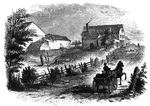
Fort Anne
Site of Fort Anne. This view is from the bridge which crosses Wood Creek, looking south. The distant…

Fort at Chambly
Fort at Chambly, this is a view of the south and west sides of the fort, looking toward the river. It…

Parakeet Macaw
Native to South America, the parakeet macaw is renowned for its powers to imitate human speech.
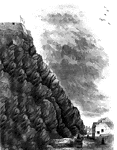
Cape Diamond
Cape Diamond, this is a view of the spot where Montgomery was killed. The cliff is Cape Diamond, crowned…
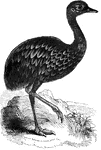
Pantagonian Rhea
Found in Southern Pantagonia, the Pantagonian rhea's plumage is of a dark, mottled color.
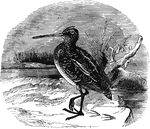
European Snipe
Ranging as far north as Scandanavia, Iceland, and Greenland in the summer, the European snipe migrates…

King Penguin
Also known as the pantagonian penguin, the king penguin is found in the far southern latitudes of South…
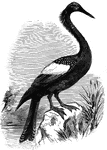
Anhinga
Also known as the snake-bird, the anhinga inhabits the freshwater areas of the South Atlantic States;…
Matamata tortoise
Primarily nocturnal, the matamata tortoise of South America feeds on small reptiles and fish.
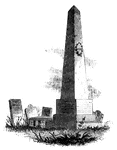
Caldwell's Monument
Caldwell's monument. The following are the inscriptions upon the Caldwell monument: East Side: "This…

Liberty Hall
Liberty Hall. Some time after the death of Governor Livingston this property was purchased by Lord Blingbroke,…

Agnew and Erskine
Head-quarters of Agnew and Erskine. This house is on the south bank of Still River, at the north end…
